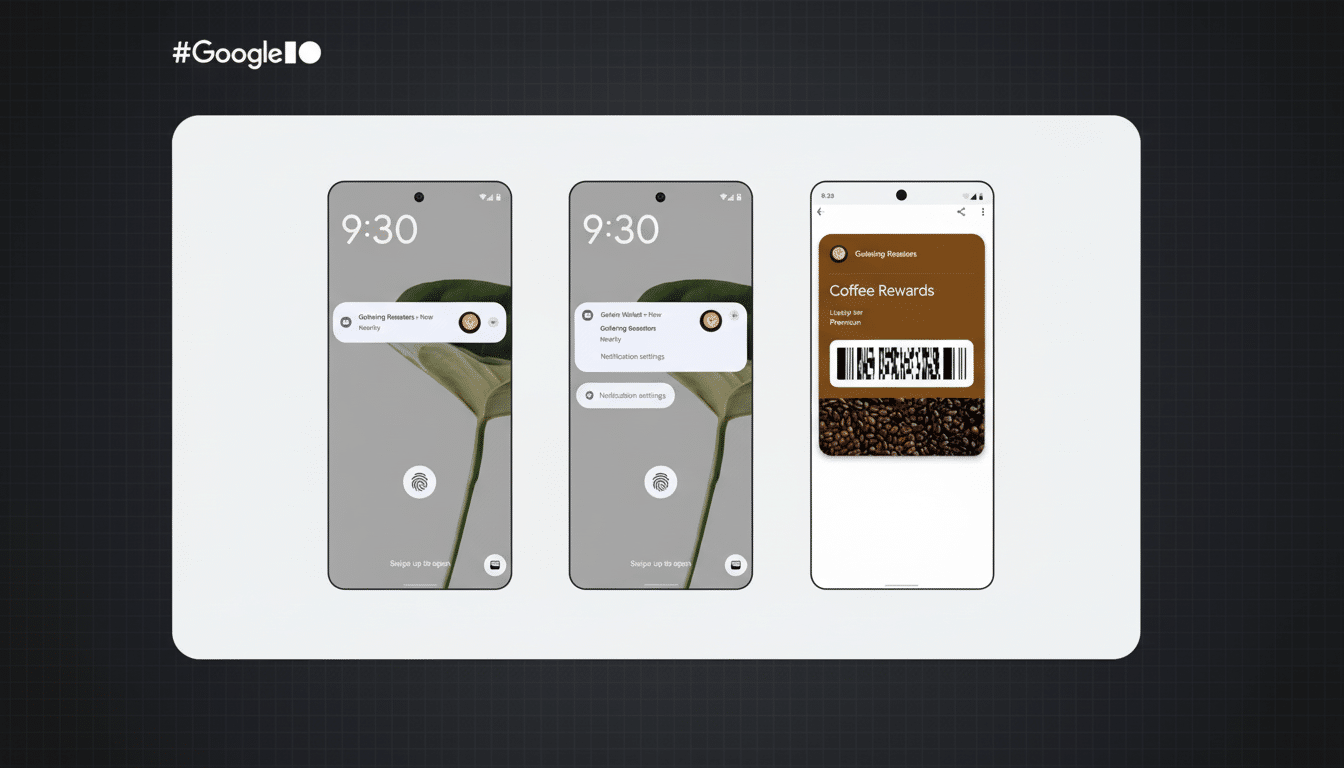Google Wallet is learning when to be smart. A new Nearby Pass capability ushers in the specific ticket, transit pass, or loyalty card you need as soon as you get to where it can be used, reducing frantic scrolling and accidental taps at the gate.
What Nearby Pass Does and How It Appears in Wallet
Nearby Pass leverages location awareness to determine when you’re near a supported venue or transit station associated with a pass saved to Wallet. If it knows you’re nearby, and it’s very good about when that happens, you get a notification right away; tap, and the appropriate pass flips up in an instant — even with a Wallet full of cards and tickets.
- What Nearby Pass Does and How It Appears in Wallet
- Location Smarts With User Controls for Privacy
- Smarter Organization With Nicknames for Your Passes
- Use Many NFC Access Cards on One Device With Wallet
- Passes Are Always In Sync With The Gmail Integration
- Why This Matters To Commuters And Venues
- The Bottom Line on Nearby Pass and Wallet Upgrades

In concrete terms, that can mean a subway pass appears when approaching the turnstile, a concert ticket bubbles to the surface as you get near an arena, and a store loyalty card shows up when visiting in order to use a coupon. It’s a small change with an outsized effect because it eliminates the friction that typically arises at the worst possible moment: when there is a line of impatient people behind you.
Google previewed this smarter surfacing for tasks at its developer conference and is now rolling it out widely in Wallet. The execution is based on geofencing, so it can operate proactively and you’re not the one searching through a list of cards.
Location Smarts With User Controls for Privacy
Since Nearby Pass is location-signaled, it leverages privacy and permission controls that are baked into Android. If you restrict location access or notifications, Wallet respects that. For users who do opt in, geofenced triggers are meant to be lightweight and context-aware, rather than continually monitoring your movement.
This results in an assistive nudge when it is actually helpful. If the event or transit operator uses Wallet passes, you should automatically see the one you need when you need it with as little battery and data overhead as possible.
Smarter Organization With Nicknames for Your Passes
For easier-to-manage large pass libraries, nicknames are now supported in Wallet for both the mobile and web experiences. You can rename cards — “Work Metro,” “Family Zoo Pass,” “Primary Rewards,” and so on — to help you tell similar items apart at a glance, which is particularly useful when you carry multiple passes from the same service.
Wallet also defaults to the last used pass within a context, meaning if you tapped one card yesterday, it’ll probably be at the front today. It’s a relatively small behavior modification that adds time back to the lives of commuters and frequent flyers.

Use Many NFC Access Cards on One Device With Wallet
On the developer side, Google has removed a limitation and now supports multiple NFC passes with the same Application ID (AID) in a single Wallet. In terms of NFC, the AID is an identifier for a particular applet on your card — often used for secure access badges, hotel keys, campus IDs, and corporate credentials that adhere to ISO 7816 standards.
For end users, that means you can put several door credentials — a couple of different buildings, or zones in the same building — onto one phone. It’s an obvious quality-of-life upgrade for administrators and hotel managers who handle lots of keys, too. Wallet will prioritize the most recently used credential for that situation when you tap; at the reader, less guessing.
Passes Are Always In Sync With The Gmail Integration
Wallet is doubling down on automation with email parsing. With this setting turned on, your Gmail passes (such as boarding passes, event tickets, and loyalty sign-ups) will be automatically saved to Wallet. The biggest benefit is for travelers: Check-in alerts and seat updates land in your email inbox and materialize in Wallet without the need to take manual steps.
The auto-save method reflects how many people treat digital confirmations already, but it stores them in a secure, tap-ready format that’s universally accessible anytime from the lock screen or quick access shortcut.
Why This Matters To Commuters And Venues
Slight delays quickly add up in real-life queues. Contactless and mobile taps have helped transit systems around the world speed entry over magstripe or barcode scans, with some of the largest (like Transport for London) reporting most pay-as-you-go trips are done via contactless. By surfacing the correct pass at just the right time, Wallet eliminates one of the few remaining points of user-caused delay.
That update also brings Wallet closer to parity with services from competitors that present you with the relevant passes near nearby locations proactively, while preserving Android’s greater range of hardware and partners. For venues and retailers, it’s a chance to mitigate onboarding friction and lift redemption rates for tickets and offers already in a customer’s pocket.
The Bottom Line on Nearby Pass and Wallet Upgrades
Nearby Pass makes Google Wallet seem prognostic instead of reactionary. With nicknames, more advanced support for NFC credentials, and Gmail auto-adding, it can take up one corner of a cluttered digital billfold and become the context-aware assistant it was meant to be. If you use Wallet for transit, events, or access, count on fewer taps, fewer searches, and smoother entries as the rollout hits your device.

